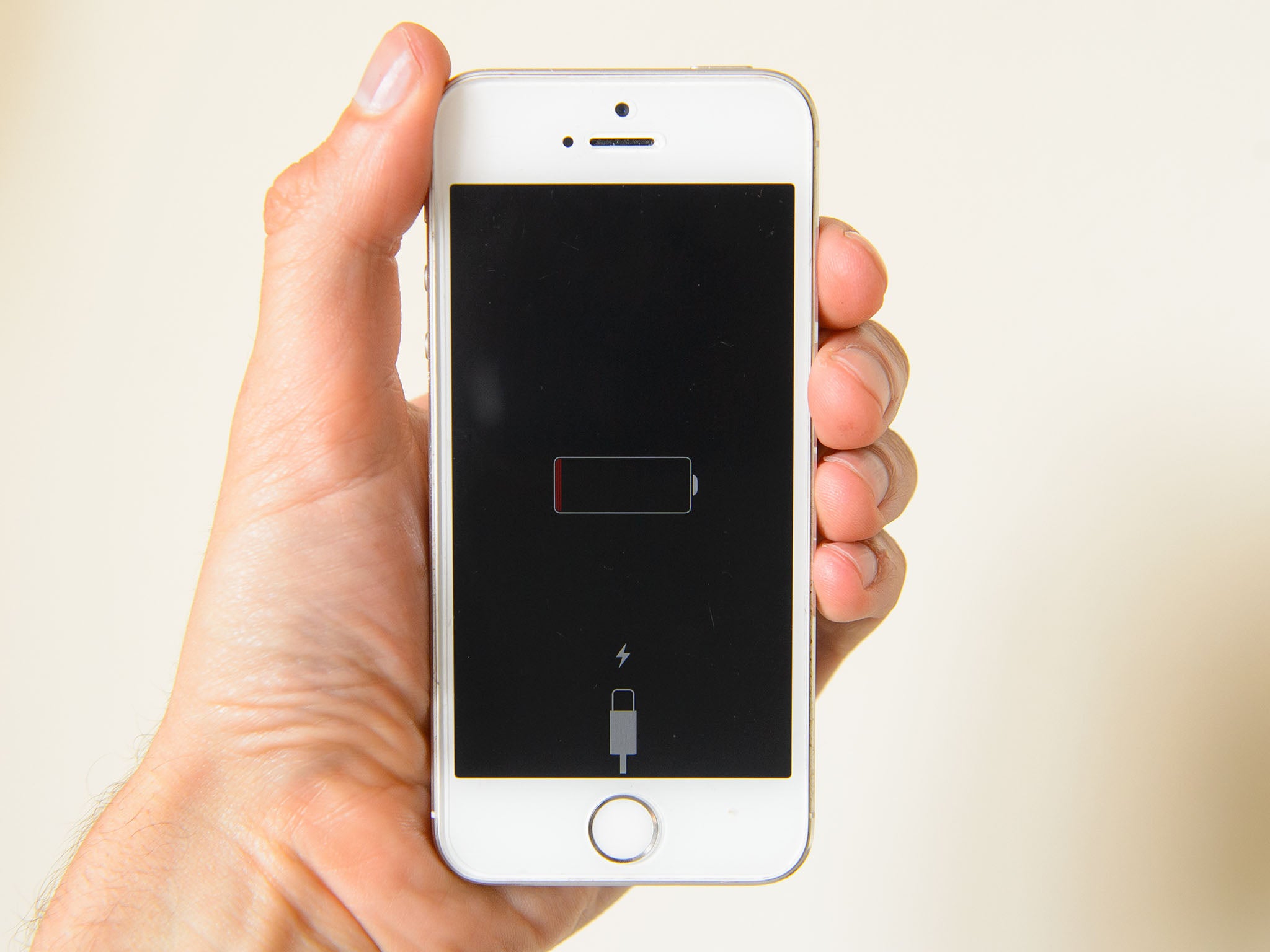iPhone battery life: Tips to make your Apple handset last longer
Some of them are straightforward, but others are a little less obvious

Your support helps us to tell the story
From reproductive rights to climate change to Big Tech, The Independent is on the ground when the story is developing. Whether it's investigating the financials of Elon Musk's pro-Trump PAC or producing our latest documentary, 'The A Word', which shines a light on the American women fighting for reproductive rights, we know how important it is to parse out the facts from the messaging.
At such a critical moment in US history, we need reporters on the ground. Your donation allows us to keep sending journalists to speak to both sides of the story.
The Independent is trusted by Americans across the entire political spectrum. And unlike many other quality news outlets, we choose not to lock Americans out of our reporting and analysis with paywalls. We believe quality journalism should be available to everyone, paid for by those who can afford it.
Your support makes all the difference.Apple has found itself embroiled in controversy after admitting it deliberately slows down iPhones when they get older. At the heart of the issue is battery life.
The company says it throttles performance as a precautionary measure. iPhones use lithium-ion batteries that degrade over time, and Apple says if it did not throttle performance there would be a greater risk of internal components being damaged and the phones shutting down unexpectedly.
Fortunately, there are certain steps you can take to improve your iPhone’s stamina.
Streamline notifications
Without notifications, your phone wouldn’t be half as useful as it is. However, there are some – recommendations from your favourite TV streaming app, for instance – you can probably live without.
Disabling notifications for some apps can actually help you extend your phone’s battery life. In the Settings menu, tap Notifications and decide which apps you don’t strictly need notifications from.
Stop force quitting apps
Force quitting apps – where you swipe them away – might be tempting when you stop using them, but it’s actually a bad idea.
That’s because idle apps don’t use many resources, and when you want to open them again, they can quickly pick up from where you left off. Force quitting an app, on the other hand, forces it to to start over afresh when you launch it again, which is more intensive.
Disable auto-sync
Some apps, such as email and social networks, constantly run in the background even when you’re not using them, to ensure you see updated information and updates when you do open them again.
You can switch it off by going to Settings, General and Background App Refresh.
However, since auto-sync is genuinely useful, we’d only recommend disabling it when you know you’re going to be running very low on battery life.
Turn off location services
GPS is a huge drain on your phone’s battery, and the fact that more and more apps are using your location data to tailor your experience isn’t making things any easier.
Unless you’re trying to find your way around with a Maps app, you should be able to get by with it switched off. To turn off GPS, go to Settings, Privacy and Location Services.
Lower brightness
Your phone’s display is responsible for the biggest impact on your battery life, and it’s easy to limit how much energy it uses up. Auto-brightness is convenient, but often sets the screen brightness to a slightly higher level than it needs to be. Turning auto-brightness off, setting your display’s brightness to a lower level and adjusting it when you need to is less convenient but far more sensible.
Uninstall apps
Some apps drain more battery life than others, and it’s worth working out which ones you can do without. Facebook, for instance, is known to have a heavy impact on your phone’s battery, and you can eliminate this by deleting the app and using the social network through your web browser instead.
You can see the apps and processes that are affecting your battery by going to Settings and Battery. From there, work out what you can delete or replace with a less-demanding alternative.
Sacrifice Siri
Virtual assistants are becoming increasingly capable, and therefore increasingly important in tech companies’ eyes. Not all consumers share their enthusiasm though, and rarely – if ever – use them.
Whether you use Siri or not, by default it is always listening out for trigger words, and this uses up battery life. Fortunately, you can switch this off by going to Settings, Siri and Allow “Hey Siri”.
Disable vibrate
Vibrate is a great middle-ground between a potentially disruptive ringtone and total, uncertain silence, but it also uses up the most battery life of the three options.
You can go a step further by also disabling tap feedback, which is a reassuring feature, but ultimately unnecessary.
Switch off connections
If you’re connected to a Wi-Fi network, switch your mobile data off, and vice versa.
Similarly, remember to turn off Bluetooth and NFC when you’re not using them.
Use Airplane mode
Airplane mode isn’t just for when you’re on an aeroplane. If you know you’re not going to have or won’t need signal or a Wi-Fi connection for a good amount of time, it’s worth enabling Airplane mode.
Otherwise, your phone will use up battery life by pointlessly trying to connect to a network.
Join our commenting forum
Join thought-provoking conversations, follow other Independent readers and see their replies
Comments